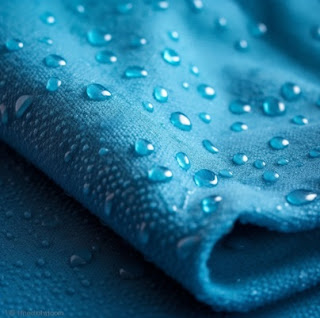Water repellent chemicals have become indispensable in various industries, providing critical protection against moisture and water damage. From the textile industry, where they safeguard clothing and outdoor gear, to the construction industry, where they help preserve building materials, these chemicals offer a range of benefits. However, their effectiveness largely depends on the application techniques used. Let's explore the various methods of applying water repellent chemicals, considering the pros and cons of each, and the contexts in which they are best suited.
Spraying: Versatile and Efficient
Spraying is one of the most common techniques for applying water repellent chemicals. This method involves using a spray gun or aerosol can to evenly distribute the chemical over a surface. It's particularly popular in the textile industry, where it is used to treat clothing, shoes, and outdoor gear. Spraying provides a consistent coating and allows for rapid application over large areas.
The versatility of spraying makes it ideal for complex shapes and hard-to-reach areas. However, it's crucial to ensure proper ventilation and safety measures during application, as some chemicals can release volatile organic compounds (VOCs). Additionally, the application must be thorough to ensure complete coverage and effectiveness.
Dipping: Full Immersion for Maximum Coverage
Dipping involves immersing an entire object or material into a bath of water repellent chemicals. This technique is often used for smaller items or when a high level of protection is needed. Dipping ensures complete coverage, making it particularly effective for textiles, footwear, and industrial components.
One of the advantages of dipping is that it can penetrate deeper into the material, providing a more robust barrier against water. However, it requires careful handling to avoid excess chemical retention and the need for drying time. This method is also more labor-intensive and may not be suitable for large-scale applications.
Coating: Controlled Application for Precision
Coating is a technique where water repellent chemicals are applied to a surface using brushes, rollers, or other specialized equipment. This method is commonly used in the construction industry to treat building materials like concrete, wood, and brick. Coating allows for greater control over the application, ensuring an even and precise distribution of the chemical.
One of the benefits of coating is its adaptability to different types of surfaces and materials. It can be used to create specific patterns or textures, making it ideal for architectural applications. However, coating often requires multiple layers to achieve the desired level of water repellency, which can increase application time and cost.
Vacuum Impregnation: High-Pressure Penetration
Vacuum impregnation is a technique used primarily in industrial applications, where high-pressure systems are used to force water repellent chemicals deep into a material's structure. This method is ideal for treating components that require extensive protection against moisture, such as electrical parts and automotive components.
Vacuum impregnation ensures thorough penetration of the chemical, providing a highly effective barrier against water and moisture. However, the equipment and expertise required for this technique make it more suitable for industrial settings rather than consumer applications.
Conclusion
Water repellent chemicals play a crucial role in protecting various materials and products from moisture-related damage. The choice of application technique depends on the specific industry, the type of material, and the desired level of protection. Spraying offers versatility, dipping ensures complete coverage, coating allows for precision, and vacuum impregnation provides deep penetration. Understanding these techniques and their applications can help manufacturers, builders, and consumers make informed decisions about the best approach for their needs.
Regardless of the method used, proper safety measures and environmental considerations should always be a priority, especially with chemicals that release VOCs or have other potentially harmful effects. With the right technique and careful application, water repellent chemicals can significantly enhance the durability and longevity of a wide range of products and materials.

Comments
Post a Comment